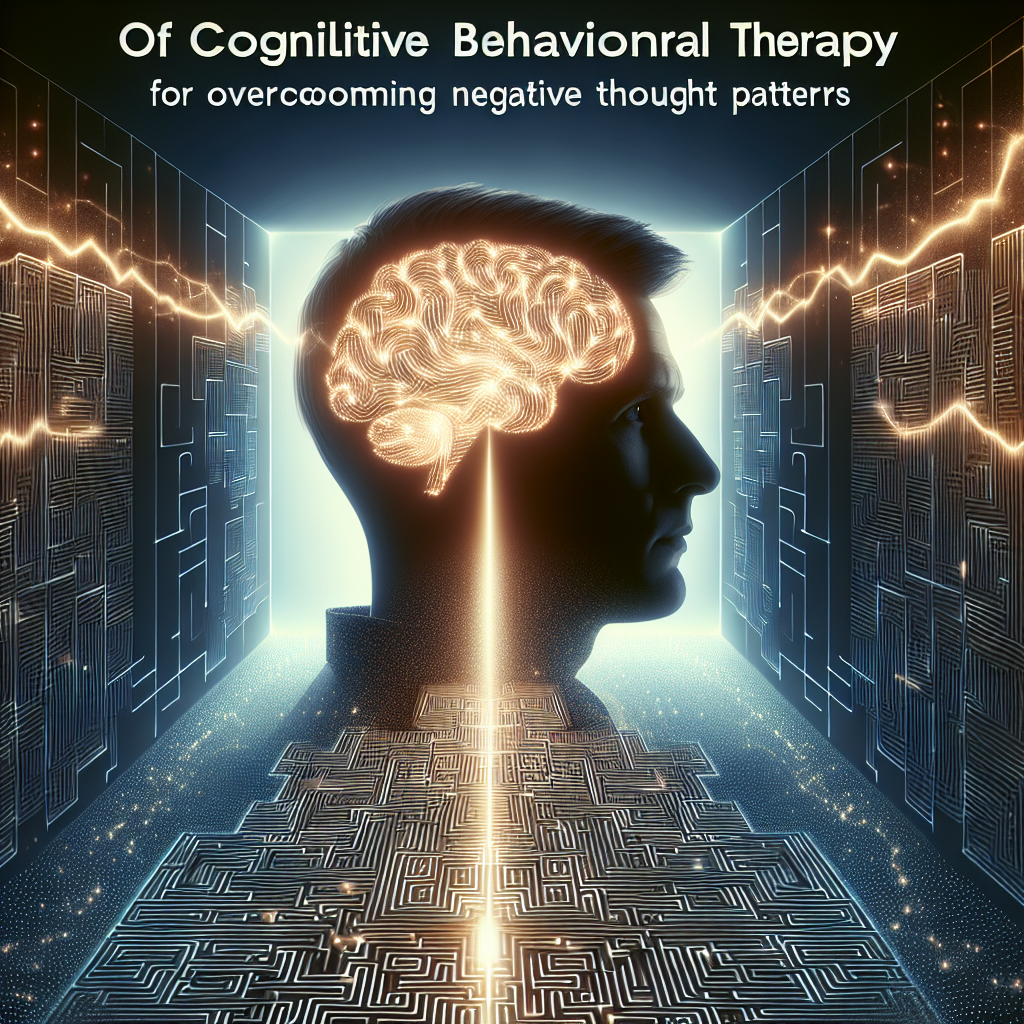Cognitive Behavioral Therapy (CBT) is a widely used psychotherapy approach that is focused on identifying and changing negative thought patterns that contribute to emotional distress and behavioral problems. CBT is based on the idea that our thoughts, emotions, and behaviors are interconnected, and that changing one can lead to changes in the others.
In this article, we will explore the techniques and strategies of CBT for overcoming negative thought patterns. We will discuss how CBT works, the benefits of CBT, and some common FAQs about this therapy approach.
How does CBT work?
CBT works by helping individuals become more aware of their thoughts, emotions, and behaviors, and how they are interconnected. The therapist helps the individual identify and challenge negative thought patterns, and replace them with more realistic and balanced thoughts. This process helps individuals develop more adaptive coping strategies and change unhelpful behaviors.
CBT also teaches individuals skills for managing their emotions and stress, such as relaxation techniques, mindfulness, and problem-solving skills. By learning these skills, individuals can better cope with challenges and prevent negative thought patterns from taking over.
What are the benefits of CBT?
CBT has been shown to be effective for a wide range of mental health issues, including depression, anxiety, PTSD, and eating disorders. It is a short-term, goal-oriented therapy that typically lasts for 12-20 sessions. Some of the benefits of CBT include:
– Improved mood and increased self-esteem
– Better stress management and coping skills
– Enhanced problem-solving abilities
– Increased self-awareness and self-regulation
– Improved relationships and communication skills
CBT is also a collaborative and empowering therapy approach, as it empowers individuals to take an active role in their own recovery. By learning and practicing new skills, individuals can make lasting changes in their thoughts, emotions, and behaviors.
What are some techniques and strategies used in CBT?
CBT uses a variety of techniques and strategies to help individuals overcome negative thought patterns. Some common techniques include:
– Cognitive restructuring: This technique involves identifying and challenging negative thought patterns, and replacing them with more balanced and realistic thoughts. For example, if someone has the thought “I’m a failure,” they might challenge this thought by asking themselves for evidence to support it and considering alternative explanations.
– Behavioral activation: This technique involves encouraging individuals to engage in activities that give them a sense of pleasure or accomplishment, even when they are feeling low. By engaging in positive activities, individuals can boost their mood and break the cycle of negative thinking.
– Exposure therapy: This technique is often used to treat anxiety disorders, such as phobias and PTSD. It involves gradually exposing the individual to feared situations or objects, in order to reduce their anxiety and learn that they are not as threatening as they once thought.
– Relaxation techniques: CBT often teaches individuals relaxation techniques, such as deep breathing, progressive muscle relaxation, and mindfulness meditation. These techniques can help individuals reduce stress and anxiety, and promote a sense of calm and well-being.
FAQs about CBT:
Q: Is CBT effective for everyone?
A: While CBT is effective for many individuals, it may not be the best fit for everyone. It is important to work with a therapist to determine the most appropriate treatment approach for your specific needs.
Q: How long does CBT take to see results?
A: Some individuals may see improvement after just a few sessions of CBT, while others may take longer to experience significant changes. The length of treatment will depend on the individual’s specific issues and goals.
Q: Can I practice CBT techniques on my own?
A: While it is helpful to work with a trained therapist to learn and practice CBT techniques, there are self-help resources available for individuals who want to practice CBT on their own. These resources can be a helpful supplement to therapy or a way to continue practicing CBT skills after therapy has ended.
Q: Is CBT covered by insurance?
A: Many insurance plans cover CBT for mental health issues. It is important to check with your insurance provider to see if they cover CBT, and to find a therapist who accepts your insurance.
In conclusion, CBT is a powerful and effective therapy approach for overcoming negative thought patterns and improving mental health. By learning and practicing CBT techniques, individuals can develop the skills they need to challenge unhelpful thoughts, manage their emotions, and change their behaviors. If you are struggling with negative thought patterns or emotional distress, consider reaching out to a therapist who can help you explore the techniques and strategies of CBT.




Leave A Comment